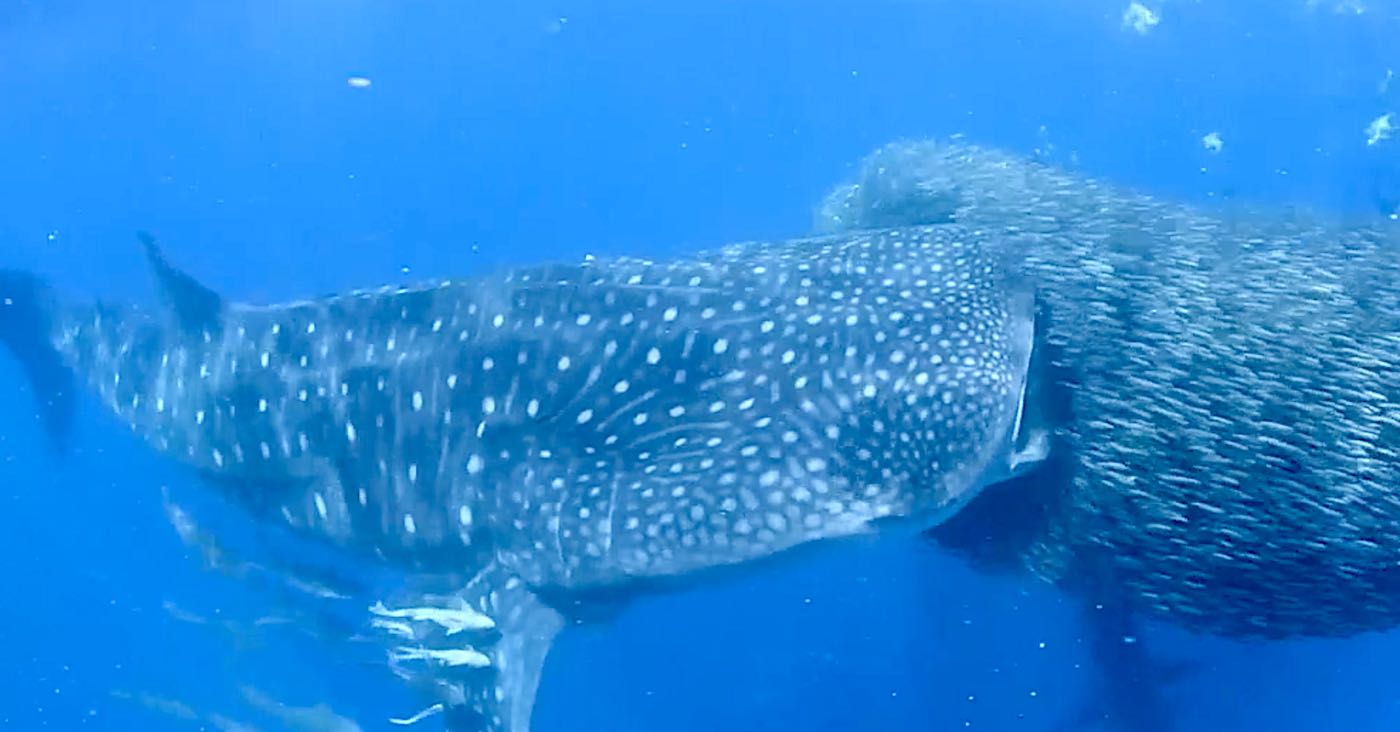A group of whale sharks were recently seen feeding on baitfish balls in tandem with other predators in some stunning underwater footage.
The world’s largest fish normally cruises around expending very little energy while eating tiny krill, and this sort of fast coordinated hunting is very poorly understood by marine biologists.
Recorded growing as long as 60 feet and weighing many tons, despite a 5-foot-long mouth, its throat opening is only about the size of a grapefruit. This limits the animal’s available edibles to krill and plankton, but 21st-century documentation has confirmed that anchovies, baitfish, and even the occasional squid are also on the menu.
“Bait balls” are swarms of small fish concentrated in a single ever-moving mass as a defence mechanism. They draw in predators of all shapes, and in the video filmed off Ningaloo Reef in Western Australia, the whale sharks feed together with diving wedge-tailed shearwaters, which are a kind of petrel, powerful tuna, and both trevally and whaler sharks.
It seems possible that either the smaller feeders are coordinating their attacks off of the lumbering charges of the whale sharks, but cooperation in nature is rarely a single lane road, and it’s possible that the whale sharks benefit from the other predators’ presence as well.
RELATED: Mesmerizing Rose-Veiled Fairy Wrasse is New to Science – And Named for National Flower
“The interactions made my mind race with a whole bunch of questions,” Emily Lester, a postdoctoral fellow at the Australian Institute of Marine Science, told National Geographic. Lester published a paper on the interactions in the journal Pacific Conservation Biology.
“We know that when bait balls are around, other predators do these spatially-coordinated attacks to maximize their foraging efficiency. What if the same thing is happening here?”
“I wonder if this is a two-way interaction,” Lester muses. “After the whale sharks charge through the bait ball, can those other predators capitalize on the isolated fishes that are separated?”
MORE: A Pod of Whales Adopted a Young Stray Narwhal – and They May Have Little ‘Narwhales’
Bait balls form, not as what seems to be an apparent suicide pact, but because not only is there strength in numbers, but also because the limitless number of targets confuses predators, which, possessing strong focal vision, prefer to focus on a single prey animal.
At 0:37 in the video, one can see that the charging whale shark is tailed by a cool dozen other hungry fish, perhaps ready to target the isolated fish as Lester suspected. What the whale sharks get in return is unknown.
(WATCH the video for this story below.)
FLOAT This Amazing Video to Your School of Friends on Social Media…




















